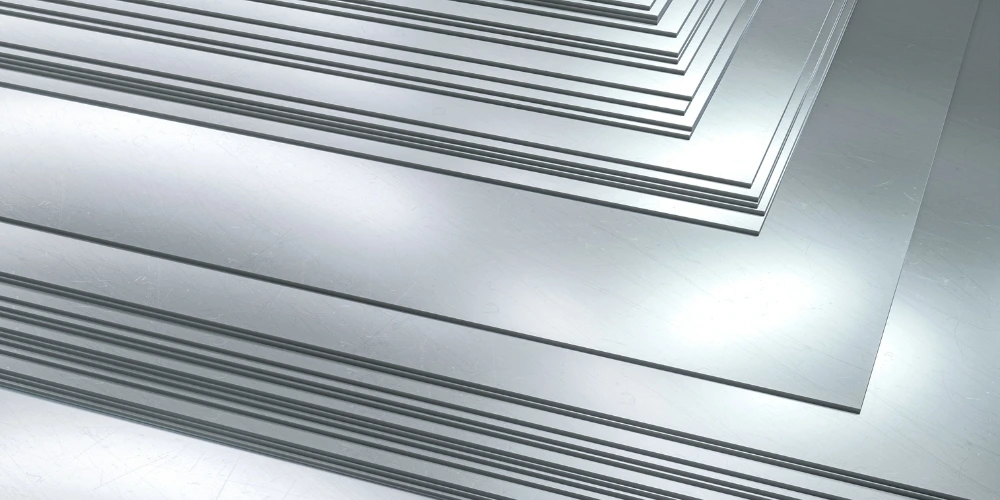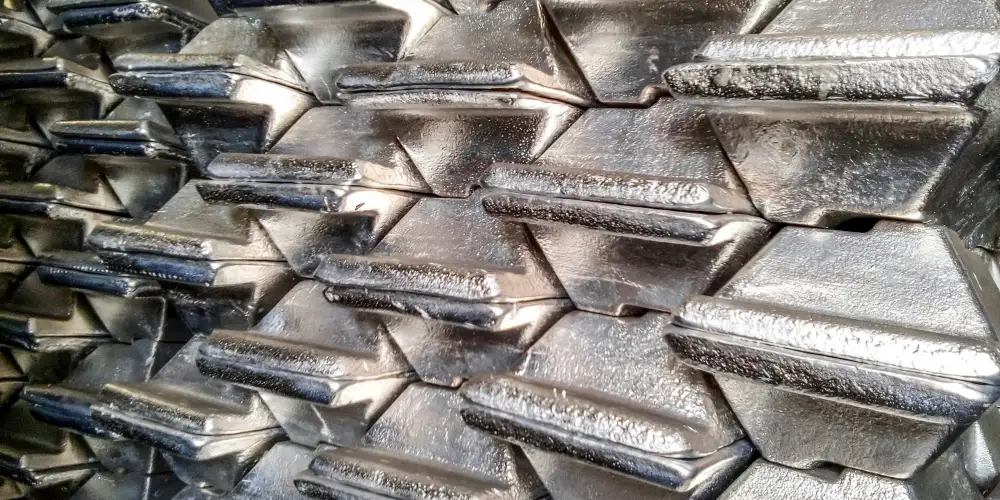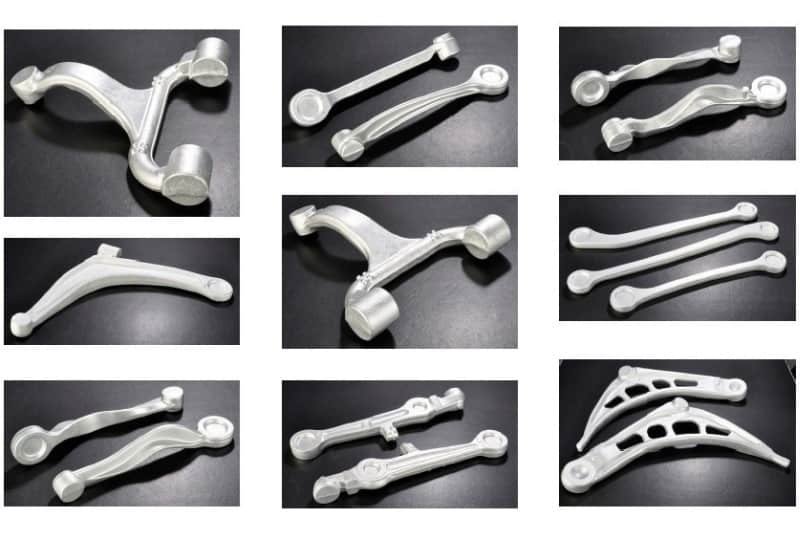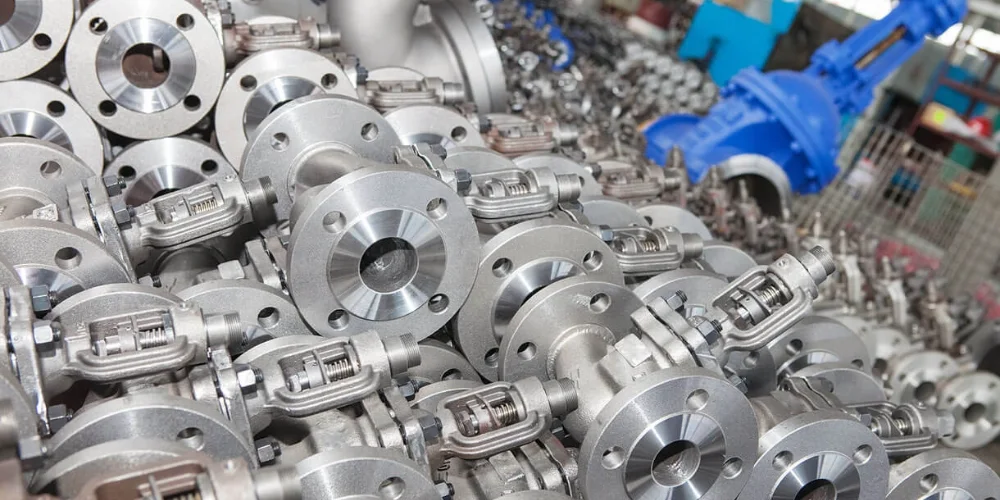Overview
Chemical Composition of Aluminum 6082
Alloy 6082 is a medium-strength alloy with excellent corrosion resistance. Alloy 6082 has the highest strength of the 6000 series alloy. Due to the higher strength of Alloy 6082, it has replaced Alloy 6061 in many applications. Alloy 6082 is typically used in highly stressed applications, Trusses, Bridges, Cranes, Transport applications, Ore Skips, Beer Barrels, and Milk churns.
| Chemical Element | % Present |
| Manganese (Mn) | 0.40 – 1.00 |
| Iron (Fe) | 0.0 – 0.50 |
| Magnesium (Mg) | 0.60 – 1.20 |
| Silicon (Si) | 0.70 – 1.30 |
| Copper (Cu) | 0.0 – 0.10 |
| Zinc (Zn) | 0.0 – 0.20 |
| Titanium (Ti) | 0.0 – 0.10 |
| Chromium (Cr) | 0.0 – 0.25 |
| Other (Each) | 0.0 – 0.05 |
| Others (Total) | 0.0 – 0.15 |
| Aluminium (Al) | 92.5 – 98.3 |

Aluminum 6082: The Effects of Different Components on Its Properties
The aluminum alloy 6082, mainly composed of aluminum with magnesium and silicon added, reveals a good balance of properties required for a variety of industrial uses. The aluminum offers an advantage of low weight and corrosion resistance, while the magnesium has increased strength, hardness and heat treatability. The addition of silicon is quite advantageous in the casting process as it can easily be fashioned into complicated shapes like die casting. The alloy composition can be fine-tuned by the manufacturers in order to meet certain performance requirements, e.g. maximization of strength, fluidity of the alloy during pouring or corrosion resistance. This level of precision in controlling the proportions of each component makes Aluminum 6082 operational in a wide range of industrial sectors.
Mechanical Properties of Aluminum 6082
| Properties | Metric | Imperial | Comments |
| Tensile strength | 290 MPa | 42100 psi | wall thickness < 5 mm |
| 310 MPa | 45000 psi | wall thickness > 5 mm | |
| Yield strength | 250 MPa | 36300 psi | wall thickness < 5 mm |
| 260 MPa | 37700 psi | wall thickness > 5 mm | |
| Poisson’s ratio | 0.33 | 0.33 | |
| Elongation at Break | 10% | 10% | |
| Hardness, Vickers | 95 | 95 | AA, Typocal |
Physical Properties of Aluminum 6082
| Properties | Metric | Imperial |
| Denisty | 2.70 g/cc | 0.0975 lb/in³ |
| pecific weight | 2.71 | |
| Melting point | 585-650 °C | 1085-1200°F |
| Specific heat capacity | 896 [J/kg·K] | 0.214 [Btu/lb·°F] |
| Coefficient of thermal expansion (CTE) | 23.4 [10-6/K] | 13 [μin./in. ·°F] |
| Thermal conductivity | 150-170 [W/m·°C] | 86.73-98.3 [BTU/h∙ft∙°F] |
Which Aluminum Alloys Are Similar to Aluminum 6082?
Multiple alloyed Aluminums such as Aluminum 6061, Aluminum 7075, Aluminum 5083, Aluminum 6063, and Aluminum 7050, are similar to Aluminum 6082 as pertaining properties and applications. Similarly, both aluminum alloys Aluminum 6061 and Aluminum 6082 have similar high strength, formability, weldability, and corrosion resistance, with Aluminum 6061 having slightly lower magnesium and silicon content. Aluminum 7075, while much stronger than Aluminium 6082, also has similar formability and corrosion resistance properties, commonly found in aeronautics and high-performance parts. Well-known for outstanding corrosion resistance, Aluminum 5083 is similar to Aluminum 6082 whiuch is fit for marine use. Aluminum 6063 is similar to the formability and corrosion resistance of a 6063, and is often used in structural and architectural contexts. The same is also true with Aluminum 7050 whose high strength and corrosion resistance are used for aerospace and defense whereas Aluminum 6082 aligns closely to it. In spite of the fact that the right alloy can only be defined through careful assessment of technical characteristics including strength, formability, corrosion resistance, and cost, this ensures the best performance and the lowest cost.
Processing Methods Suitable for Aluminum 6082
Aluminum 6082 which is suitable for numerous manufacturing techniques is very versatile and can be used in different applications. Extrusion provides an opportunity to make advanced profiles which are necessary for structural components and the architectural profiles, while machining allows the manufacturing of unique parts with high accuracy. It uses weldability, while techniques such as bending and stamping are used to form curved and complex pieces as well as they facilitate the manufacture of structural assemblies. With casting methods such as die casting or sand casting being utilized for massive production of complex shapes. In addition to this, Aluminum 6082 has the feature of reacting to the surface treatment that includes anodizing, painting and powder coating which gives it a better look, more corrosion resistance and durability. These manufacturing procedures give the manufacturers the ability to customize Aluminium 6082 to fulfill the specific design requirements and application needs in applications across the industries of aerospace, automotive, construction, and consumer goods.
Applications of Aluminum 6082
6082 aluminum is a versatile alloy known for its excellent properties, making it suitable for various applications across different industries. Some common applications of 6082 aluminum include:
- Automotive: In the automotive domain, HDC’s expertise in machining 6082 Aluminum shines through. From crafting valve covers and dipsticks to precision wheels and stylish shift knobs, each component undergoes meticulous machining for enhanced durability and performance.
- Aerospace: The aerospace sector demands unparalleled precision, and 6082 Aluminum meets the challenge. Used in specialized components, this alloy contributes to the overall efficiency and safety of aerospace systems, showcasing HDC’s commitment to excellence.
- Medical Components: Precision is paramount in the medical field, and HDC delivers with 6082 Aluminum. Whether it’s custom piano hinges, bullet hinges, barrel hinges, or unique BMX parts, each component is engineered with precision and quality to meet diverse industry demands.
- Custom Products: 6082 Aluminum finds its place in crafting custom products, especially in the motorcycle industry. From wheels and motocross wheel sets to wheel hubs, brake pedals, and bar ends, HDC’s tailored solutions elevate the performance and aesthetics of these two-wheeled machines.
- Motorcycle: HDC’s proficiency extends to motorcycle components, where 6082 Aluminum is applied to precision-crafted wheels, motocross wheel sets, wheel hubs, brake pedals, and bar ends. Each component is a testament to HDC’s commitment to enhancing motorcycle performance.
- Trailer: HDC’s craftsmanship in the trailer industry is evident in components like the coupler repair kit, spring pin latch, trailer jack, and trailer ramp. Machined from 6082 Aluminum, these components ensure durability and functionality across various trailer applications.
- Bicycle: In the bicycle industry, HDC’s mastery extends to crafting bike stems, bicycle hubs, bike pedals, and cranksets using 6082 Aluminum. The lightweight yet robust nature of this alloy contributes to the overall performance and reliability of bicycles.
- Kart: Kart enthusiasts benefit from HDC’s precision in manufacturing sprockets, spacers, wheel hubs, steering wheels, and wheel rims—all expertly crafted from 6082 Aluminum. These components add speed and agility to racing machines, showcasing HDC’s dedication to karting excellence.







